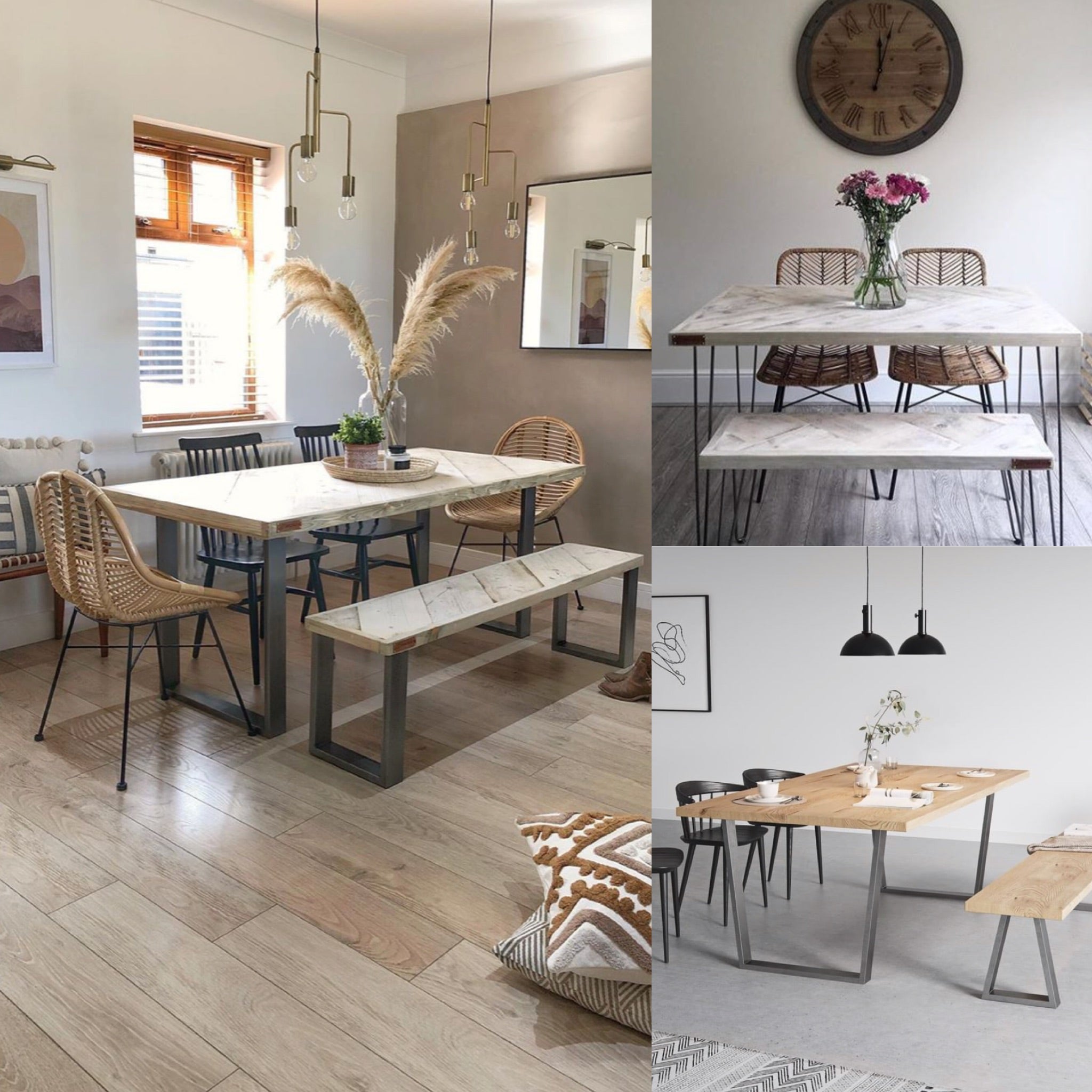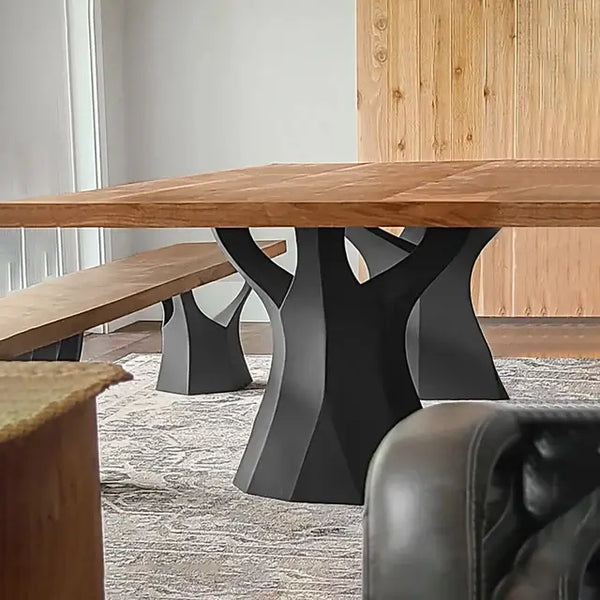Transform Your Dining Space with Stylish Dining Room Table Legs
Transform Your Dining Space with Stylish Dining Room Table Legs
Blog Article
From Traditional to Modern: Locate the Suitable Dining Space Table Legs for Your Design
The option of dining area table legs plays a crucial role in specifying the overall character of your area, bridging the space between typical craftsmanship and modern-day visual appeals. While traditional styles such as cabriole and turned legs stimulate a feeling of timeless refinement, modern designs like barrette and geometric alternatives provide an opportunity for striking visual rate of interest. Assessing the ideal equilibrium in between these styles calls for a nuanced understanding of your existing décor and individual preference. As you take into consideration these elements, the question continues to be: just how can you flawlessly incorporate these varied leg styles to develop a harmonious dining experience?
Comprehending Table Leg Styles
The range of eating area table leg styles can dramatically influence both the visual appeals and functionality of the space. Each leg design adds distinct aesthetic aspects and useful features, providing to varied style choices and usage demands. Comprehending these styles is important for picking the ideal table that lines up with your total interior decoration vision.
For circumstances, conical legs use a tidy, classic look that can boost a space's elegance, while stand bases give stability and optimize legroom, making them excellent for smaller areas. Barrette legs, a characteristic of mid-century modern-day layout, present a commercial style, enabling for a ventilated, open feeling. Trestle legs evoke rustic beauty, offering durable support and a feeling of timelessness.
In addition, the choice of products plays a significant duty. Wood legs can bring heat and structure, whereas metal alternatives typically communicate a smooth, contemporary vibe. Inevitably, recognizing table leg styles is vital for developing a cohesive eating area that mirrors individual style while ensuring practicality and comfort. By thoughtfully thinking about these elements, you can improve both the aesthetic and functional allure of your eating area.
Traditional Table Leg Options
When picking eating room table legs, traditional alternatives usually personify timeless beauty and workmanship. These designs mirror an abundant heritage and a commitment to high quality, making them ideal for those that value timeless aesthetic appeals.
One of the most famous typical leg styles is the cabriole leg, characterized by its elegant bent shape. This design typically includes decorative carvings and is most generally located in Queen Anne and Chippendale furnishings. Another preferred alternative is the turned leg, which flaunts a series of smooth, rounded forms that offer a timeless appearance while maintaining stability.
Furthermore, the straight leg, while easy, provides a tough and unadorned structure that can blend flawlessly with a range of tabletop styles. For those drawn to ornate outlining, claw-and-ball feet legs stimulate a sense of splendour and can serve as a spectacular focal factor in any type of dining area.
Last but not least, pedestal bases, although not strictly legs, provide an alternate typical choice that enables enough legroom and can be magnificently sculpted. Each of these traditional leg designs contributes to the total ambiance of a dining-room, marrying feature with aesthetic charm.

Modern Table Leg Styles
Modern table leg styles provide a varied array of designs special info that emphasize tidy lines and ingenious products. These designs typically prioritize capability while functioning as striking prime focus within a dining area. Minimalist read the full info here aesthetics prevail, with legs crafted from products such as metal, glass, and crafted wood, which add to a contemporary and ventilated feeling.
One prominent style is the hairpin leg, identified by its slender, conical framework that supplies security without overwhelming the tabletop (dining room table legs). This design is often located in mid-century contemporary furnishings and can effortlessly complement numerous eating table shapes. One more trend is the usage of geometric shapes, where legs may tackle unbalanced or angular forms, adding aesthetic interest and a touch of artistry

Mixing Styles for Special Areas
Typically, home owners look for to develop distinct eating rooms that reflect their personal design by mixing various layout components. This approach enables for the incorporation of varied visual appeals, causing an unified yet distinct atmosphere. For example, pairing a rustic wooden table with smooth, modern metal legs can create a captivating contrast that boosts the room's total charm.
In addition, incorporating vintage table legs with modern table tops can stimulate a sense of history while preserving a modern-day sensibility. Such combinations not only display individual preference yet also urge creative thinking, enabling house owners to curate an area that feels both individual and welcoming.
Shade plays an important role in this blending procedure; choosing table legs that enhance or contrast with the existing color design can boost visual interest. Whitewashed legs can soften the daring of a dark table surface area, creating a balanced aesthetic.
Tips for Choosing the Right Legs
Selecting the right table legs is necessary for achieving both capability and aesthetic charm in your eating space. Begin by considering the overall style of your area. Conventional setups gain from legs that include detailed carvings or turned styles, while modern rooms might require smooth, minimal designs.
Following, assess the height and stability of the legs. dining room table legs. Standard dining tables range in between 28 to 30 inches in elevation, so make certain the legs match this dimension for convenience. Additionally, robust materials, look what i found such as hardwood or steel, can boost stability and durability
Review the leg form too-- alternatives consist of straight, tapered, or pedestal designs. Straight legs provide a traditional look, while tapered legs can add a touch of beauty. Pedestal bases offer adequate legroom and are excellent for smaller sized spaces.
Final Thought
In recap, selecting the excellent eating space table legs requires mindful consideration of both modern-day and conventional styles. By integrating leg style, elevation, and product with the total design, a cohesive and welcoming atmosphere can be attained.
The variety of dining area table leg styles can significantly affect both the looks and capability of the room. Ultimately, recognizing table leg styles is essential for producing a cohesive eating location that mirrors personal design while guaranteeing usefulness and convenience.One of the most iconic conventional leg designs is the cabriole leg, characterized by its stylish bent shape. Straight legs use a traditional appearance, while tapered legs can add a touch of sophistication.In summary, picking the optimal eating area table legs calls for mindful consideration of both typical and contemporary styles.
Report this page